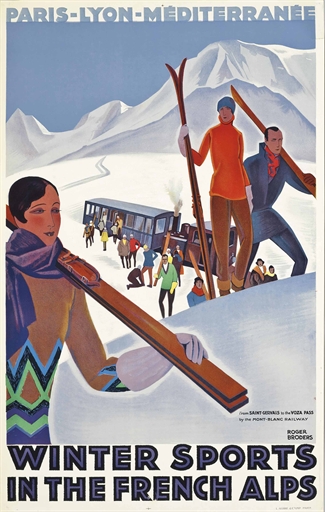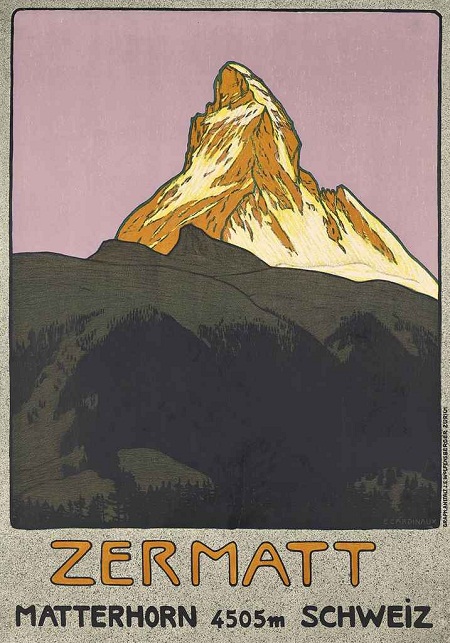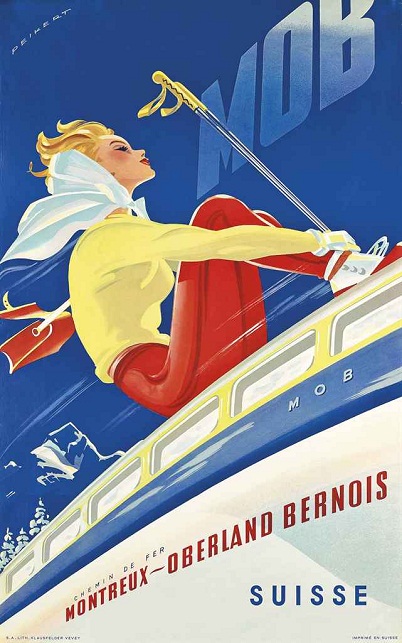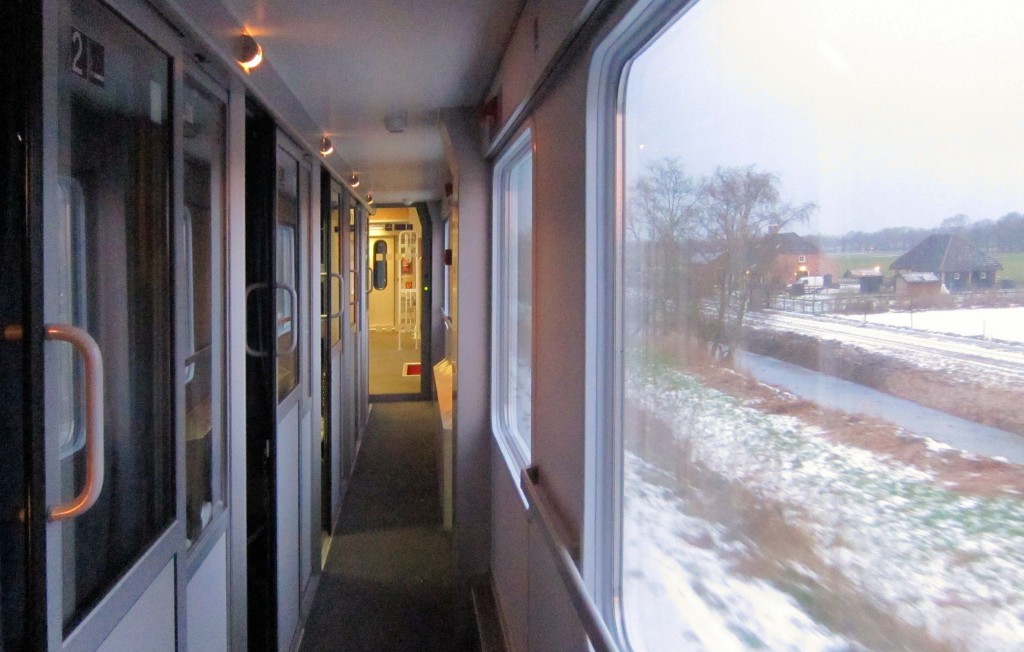 I had to go down to Switzerland for some business and thought I would take in a day’s skiing, even though the weather didn’t look good and I had a cold. The trip was painless and it made a nice break despite my heavy head. I took a bed on the excellent City Nightline on Thursday night from Utrecht to Basel for around fifty euros and was in Basel before 7am. If it wasn’t for the business, I could easily have been on the slopes somewhere like Wengen within a couple more hours.
I had to go down to Switzerland for some business and thought I would take in a day’s skiing, even though the weather didn’t look good and I had a cold. The trip was painless and it made a nice break despite my heavy head. I took a bed on the excellent City Nightline on Thursday night from Utrecht to Basel for around fifty euros and was in Basel before 7am. If it wasn’t for the business, I could easily have been on the slopes somewhere like Wengen within a couple more hours.
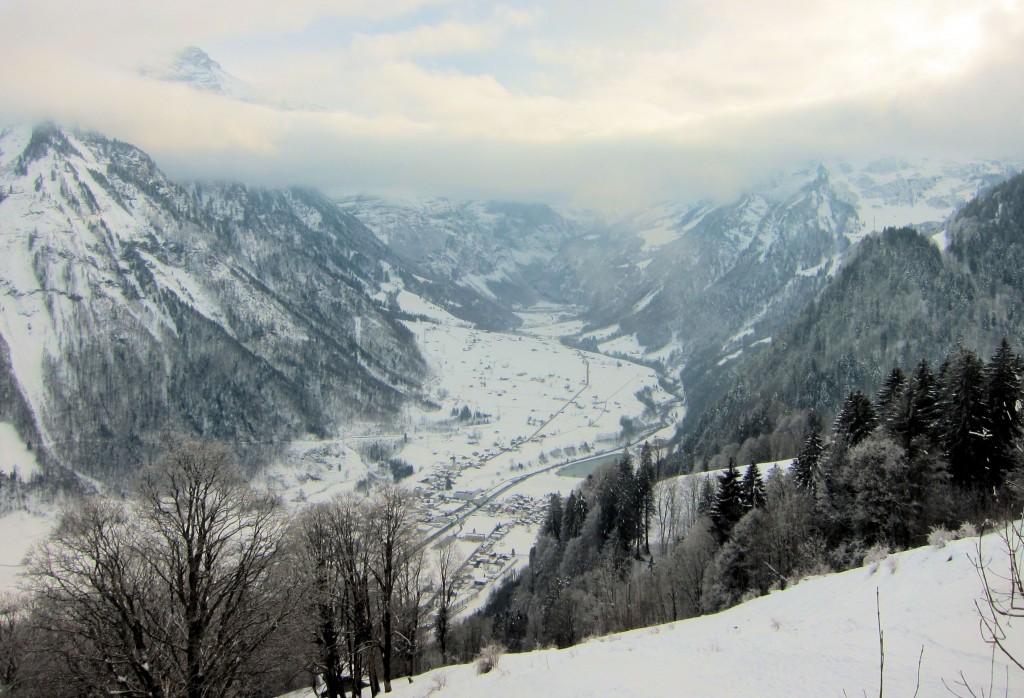 The next morning I got up early and took a train across to Zurich where I bought a Snow’n’Rail combined ticket at SFR 60. Despite all the talk of the cost of the Swiss Franc, somehow sixty francs for a scenic trip up the Linthal valley and a day in one of the most pleasant small, car-free resorts seems to me good value. Braunwald is not a huge resort, but it does have a good range of skiing as well as plenty for non-skiers to do – indeed, despite it being a Saturday, the slopes were almost empty and there seemed to be more tobogganists and winter walkers below the Eggstöcke than skiers and snowboarders. It has struck me before how unusual a resort so easy to get to from Zurich is so quiet at weekends, with most weekend warriors preferring to go to Hoch-Ybrig or Flumserberg. The trip really is a doddle, with the funicular railway right in the Linthalbahn Braunwald railway station. A quirky feature of Braunwald is the configuration of gondolas used in the resort, with one cableway operating them in pairs, another in quads and a final one alternating with chairlifts on the same cable.
The next morning I got up early and took a train across to Zurich where I bought a Snow’n’Rail combined ticket at SFR 60. Despite all the talk of the cost of the Swiss Franc, somehow sixty francs for a scenic trip up the Linthal valley and a day in one of the most pleasant small, car-free resorts seems to me good value. Braunwald is not a huge resort, but it does have a good range of skiing as well as plenty for non-skiers to do – indeed, despite it being a Saturday, the slopes were almost empty and there seemed to be more tobogganists and winter walkers below the Eggstöcke than skiers and snowboarders. It has struck me before how unusual a resort so easy to get to from Zurich is so quiet at weekends, with most weekend warriors preferring to go to Hoch-Ybrig or Flumserberg. The trip really is a doddle, with the funicular railway right in the Linthalbahn Braunwald railway station. A quirky feature of Braunwald is the configuration of gondolas used in the resort, with one cableway operating them in pairs, another in quads and a final one alternating with chairlifts on the same cable.
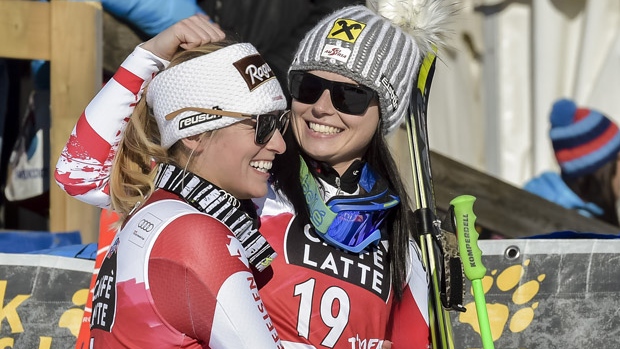
The weather wasn’t great so I had a leisurely day on the slopes. I later saw replays of Lara Gut winning in St Moritz, but the self-service restaurant at Grotzenbüel put up a big screen to let us watch the racing live at Kitzbühel on the shortened Streif course off the Hahnenkamm.
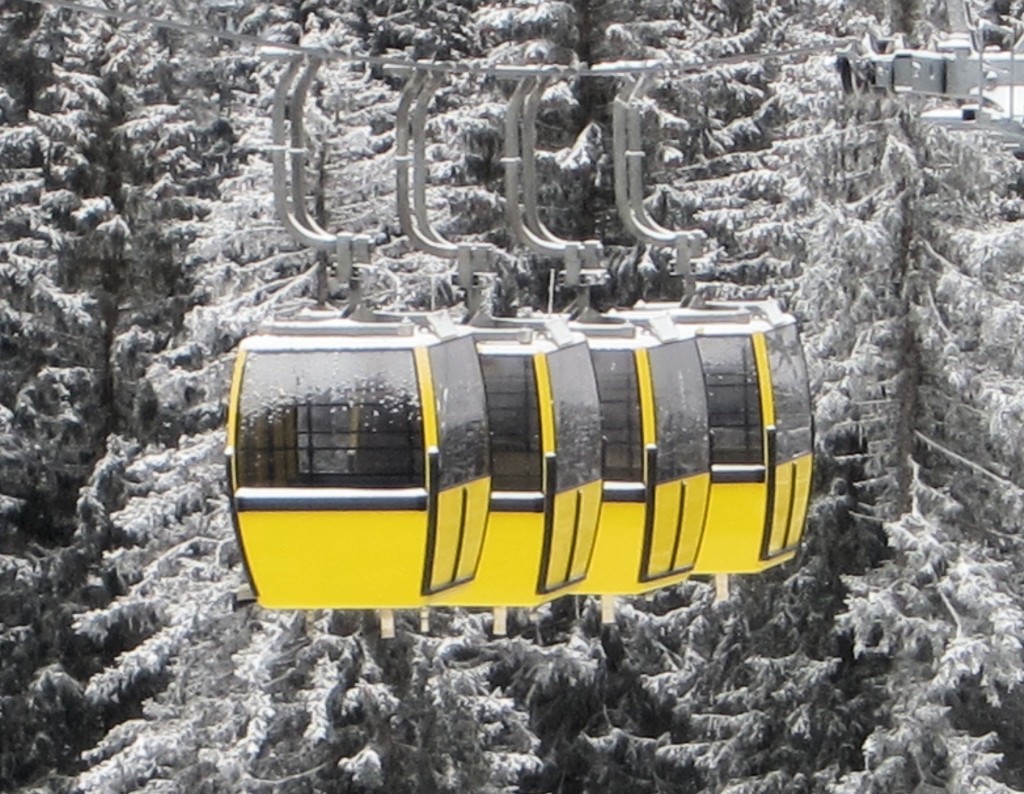
After a pleasant day on the slopes, a leisurely train journey back down the valley and a meal at Zurich Station’s NordSee fish restaurant it was time to get on the sleeper back to the Netherlands in the company of two charming Chinese ladies. The fare was cheaper than from Basel bizarrely, some 44 euros.
The Swiss have a mountain to climb
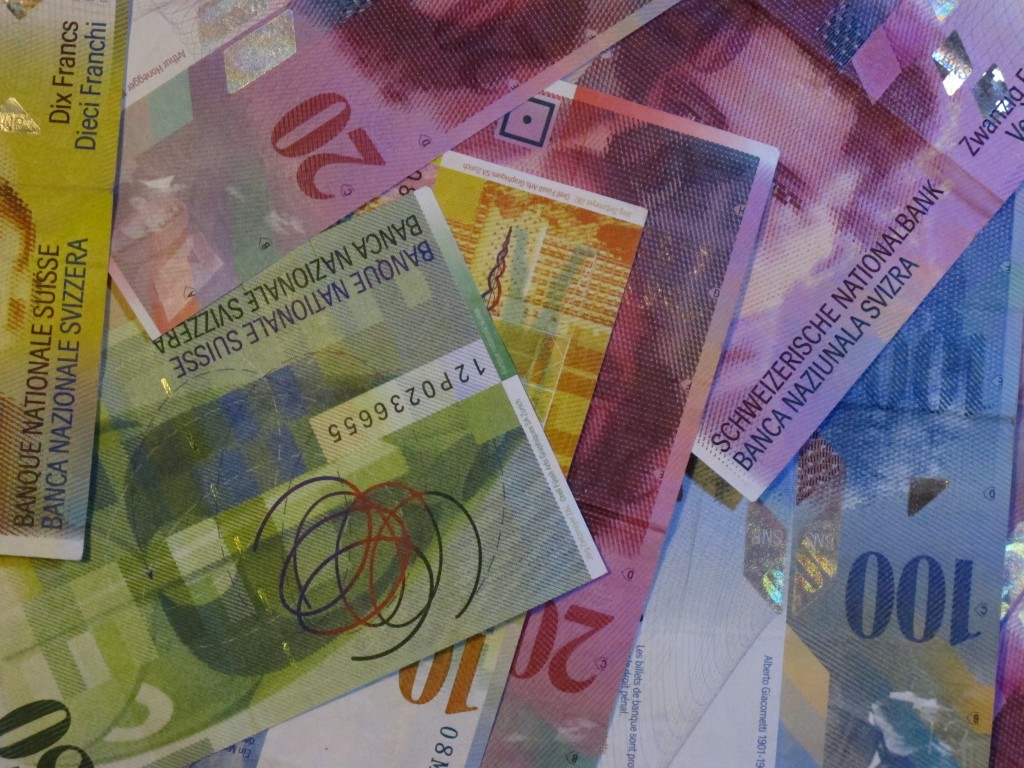
Swiss Ski Resorts were left reeling by the lifting on the cap on the Swiss currency by the Swiss National Bank. It clearly took everyone by surprise, including yours truly who was considering converting some euros to francs, but left it a little too late.
In fairness, many resorts this season will have been locked into the fixed exchange rate, and will be loathe to upset customers by amending them. For customers who paid up front, they have even less to worry about. Similarly Swiss residents, who make up the largest share of winter sports tourists, will not seen any difference at all.
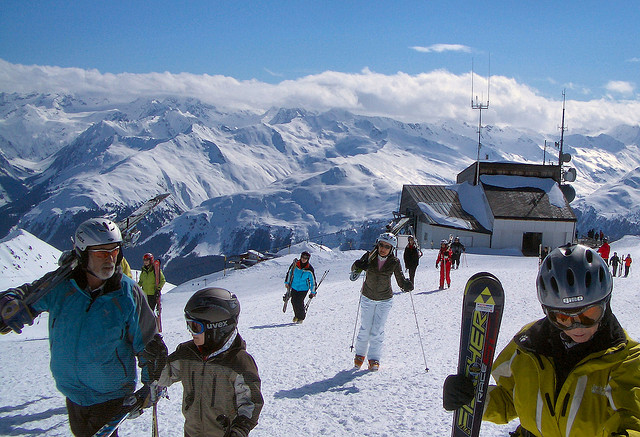
Nor, I suspect, will the global leaders who descend on Davos this time of the year to talk about world affairs, showboat, get a couple of turns in and generally enjoy an expense-paid outing. The shindig must be great for Davos, at the best of times a fabulous destination, and I suspect the visitors will not blanch at sticking another bottle of plonk on expenses even when they see the price tag. It always seem such a bizarre, even surreal, location for people to go to talk about problems facing the world.
Zermatt similarly is unlikely to feel much pain from the Swiss Franc exchange rate. The dollar and pound sterling have suffered against the franc, but not to the extent of the euro, and Zermatt gets a lot of Anglophone custom. It is also perhaps the best ski resort in the world, and many visitors will reluctantly accept the higher prices as the cost of being in the shadow of the Matterhorn. Reports are that the weakness of the ruble has not deterred the Russians who descend on St Moritz every winter, and Verbier has always attracted a crowd who are relatively price-insensitive, such as the Duke of York.

The losers are likely to be second tier resorts, and the pain is likely to occur next season. It is probable that the franc will remain strong if the European central Bank does, as is predicted, embark on a massive round of quantitative easing, i.e. print more money, and even the negative interest rates on funds held with the central bank in Switzerland does not seem to have deterred people who still see the franc as a safe haven. I will not be surprised to see the franc tagged again to the euro, albeit at a higher rate than before, simply because it is easier for a central bank to devalue a currency than to appreciate its value. An interesting article here, suggests other reasons why the SNB dropped the cap, but even if the cantonal governments welcome it a wide range of Swiss businesses will be appalled and will certainly canvas for redress.
The History of Skiing through Winter Sports Posters
On 22nd January, in London, Christie’s holds its annual “Ski Sale“, an auction featuring a selection of posters depicting winter sports and, through them, the development of skiing in the Alps. The auction features almost 250 posters, and the expected bid prices are generally somewhere in the range $1000 to $20,000 or more.
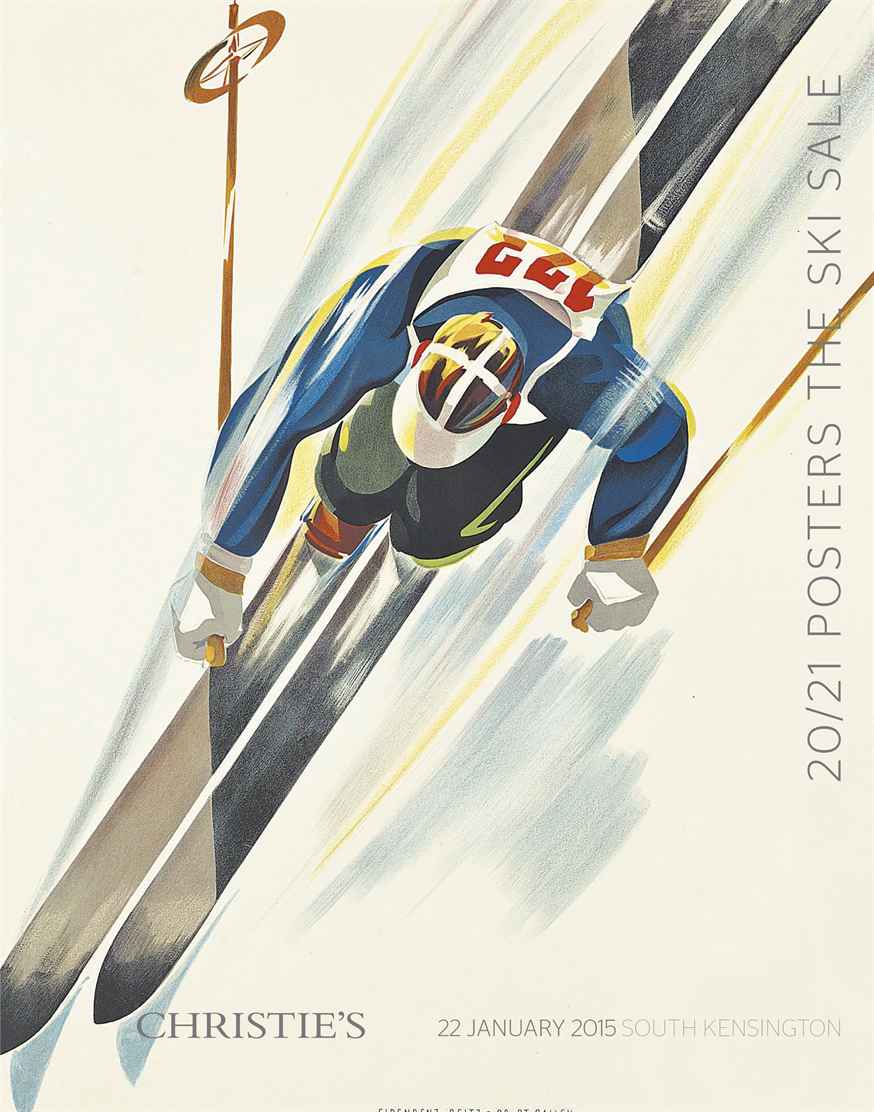
The prices are eye-watering for what were originally posters intended to entice people to exotic locations, pasted up on hoardings only to be pasted over some weeks or days later. Not surprisingly few survived, and those that did are collectible, even valuable. To an expert, such as those at the famous Galerie 123 in Geneva the difference between an original, or even a reprint from a later run, are easily distinguishable from the cheaper copies that are available now – but those cheaper copies retail for a fraction of price of the original lithographs and are of high, or even higher, reproduction standards. If you want something to adorn a wall, the copies are fine, but the originals not only embody the history of an era and demonstrate painstaking skill, they are generally of appreciating value. Most of the early posters used a laborious craft known as stone lithography, but between the 30s and 50s this mostly gave way to offset lithography and, for some photographs used in posters to a technique known as heliography. Nowadays most high quality posters use screen printing.
One of the most famous early examples of stone lithography was Emil Cardinaux’s classic 1908 lithograph of the Matterhorn, advertising Zermatt. The impact of the design was immense, redefining the style of many posters for distant holidays.
Many of the posters were commissioned by travel companies, and particularly the energetic and innovative Swiss transport companies such as MOB (Montreux–Oberland Bernois railway). This 1946 offset lithograph by Martin Peikert is a superb example with its vivid design and stylish model.
Not in the auction, but illustrating well another source of great winter sports poster art, is this picture provided by Galerie 123 of the Royal Hotel & Winter Palace in Gstaad, attributed to Carlo Pellegrini in 1913 to celebrate the opening of the hotel and to illustrate that skiing wasn’t the only winter sport on offer, with bob-sleighing and curling amongst the many alternative activities.
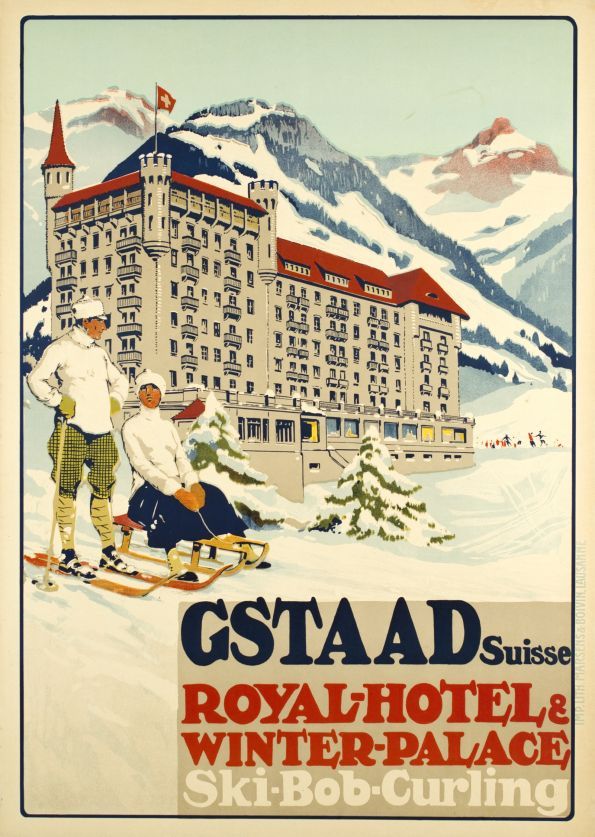
A fine example of the use of heliography and phoro montage is this 1943 poster advertising Grindelwald by Adolphe Fluckiger.
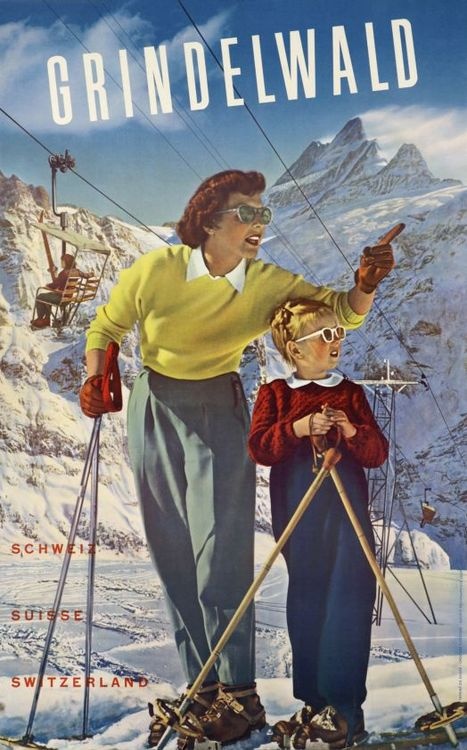
An interesting poster by Albert Muret from 1910 from the collection of Gallerie 123 shows the monks of Hospice du Grand Saint-Bernard in Valais skiing. The monks had been skiing since the 1870s, but this stone lithograph celebrated the opening of a new railway line. However it illustrates that early downhill skiing only involved a single stick, a feature of many early posters.
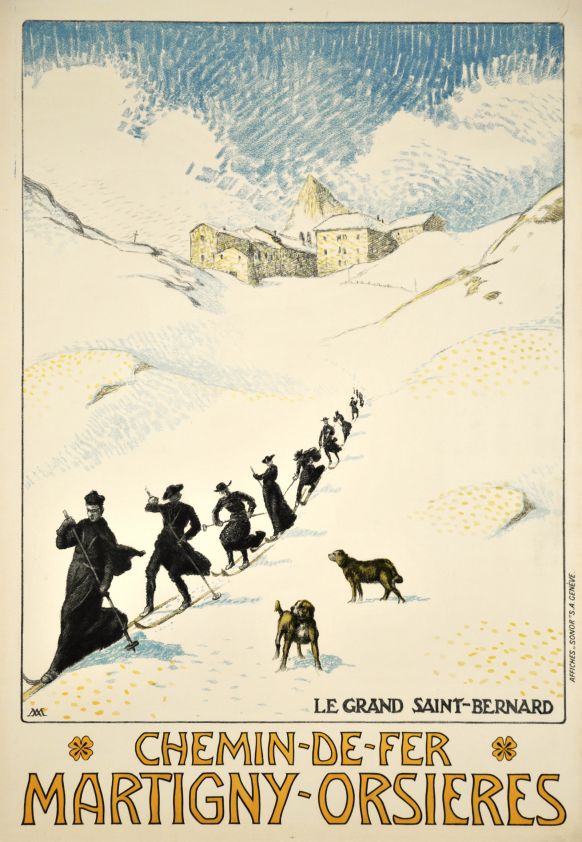
Finally, one of my favourite posters, from one of my favourite poster artists of the golden age of winter sports posters, Roger Broders. The vivid Art Deco lithograph from around 1930 promotes winter sports in the French Alps, with skiers disembarking from the train running from Paris and Lyon to the Med. The individuals are insouciant and stylish. The enticement is clear – under a blue sky, a train taking you right to the slopes of St Gervais from your dreary winter lives, into the mountains, in the company of cool people with the prospect of a ski run ahead…
